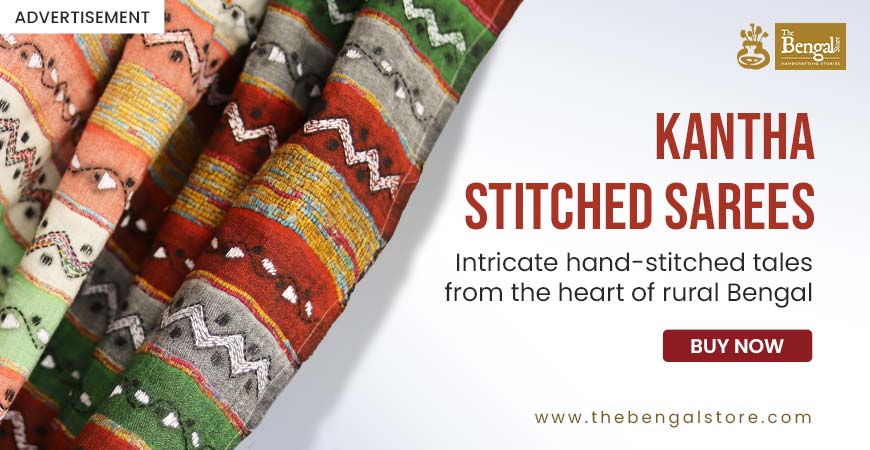Threads that breathe, stories that live - GetBengal Story

In a sticky situation on a humid afternoon in a village just outside Murshidabad, an artisan is weaving a saree from fine cotton thread on his wooden loom. The clattering of the loom has been a part of his life since childhood and he learnt it from his father and grandfather before him. For him, weaving was a matter of life, and now as artificial fabric available in the market is flowing non-stop into the lives of a fast-paced generation, he struggles to find a place for his artistry among their clothing.
If you look closely, admixture is everywhere—even in the clothes we wear every day. Most of our daily-use outfits are not made from a single fabric but from a mix designed for convenience. Cotton blended with polyester becomes wrinkle-free, silk mixed with synthetics turns affordable, and wool with acrylic feels lighter. These blends may sound practical, but they also change the way fabrics interact with our skin and environment.

Synthetic fabrics such as polyester, nylon, and acrylic are now ubiquitous in our everyday clothing. There’s no arguing that these materials are lightweight, durable, and easy to wash and dry, which makes them a no-brainer for gym apparel, or even an office shirt. However, the other side of synthetic fabrics is not as thrilling: they hold on to heat, they can’t breathe against your skin, and they shed microplastics into our water systems every wash cycle. Easy and convenient for us, but damaging for our bodies and the planet.
In contrast, handwoven materials such as cotton, khadi, or linen carry not just comfort but also centuries of tradition. Soft, breathable, and free from harsh chemicals, these fabrics allow the skin to breathe and adjust to every season. They don’t just make clothing—they tell stories of craftsmanship, patience, and culture.
Synthetic fabrics are notorious for triggering skin issues. Their chemical coatings and lack of breathability often cause itching, rashes, or redness, especially for those with sensitive skin. With heat and sweat trapped underneath, fungal infections can also become common. Handwoven fabrics, being natural, are far gentler on the skin and are rarely associated with allergies.

Doctors often underline the role of fabric choice in skin health. Synthetic materials can aggravate conditions like eczema, dermatitis, and fungal infections. Natural, handwoven fabrics, on the other hand, reduce irritation and help skin heal by allowing ventilation and reducing friction. For patients with chronic skin problems, something as simple as wearing cotton instead of polyester can make all the difference.
But apart from health benefits, handwoven fabrics have a story in their own right. Choosing handwoven fabrics can be more than comfort - it's a means to support the livelihoods of thousands of local weavers across India. Each piece of fabric woven on a loom means food on their table, education for their children, and an honorable life for their skill. Each time we purchase handwoven clothes, we are keeping an ancient art form alive, which is on the ropes because of fast fashion.

Not only does fabric cover our body, but it connects us to health, heritage and humanity. Yes, synthetic fabrics provide convenience and utility—but handwovens provide comfort to the skin, care to the planet and livelihood to artisans. As you consider purchasing an item—a dress or a saree—this is not simply a decision in fashion, but a decision in future: where does it come from, what does it mean for you, and what does it mean for the hands that wove it!











